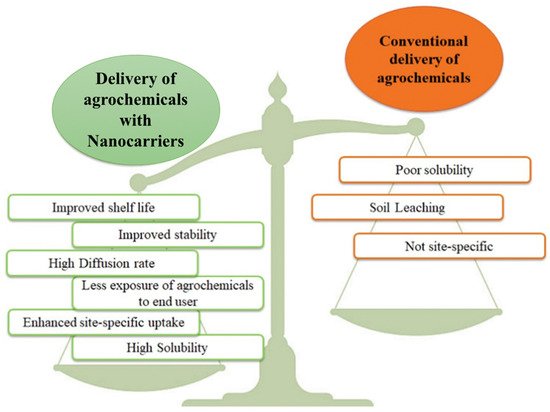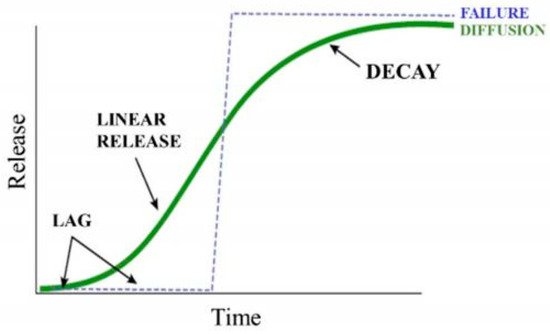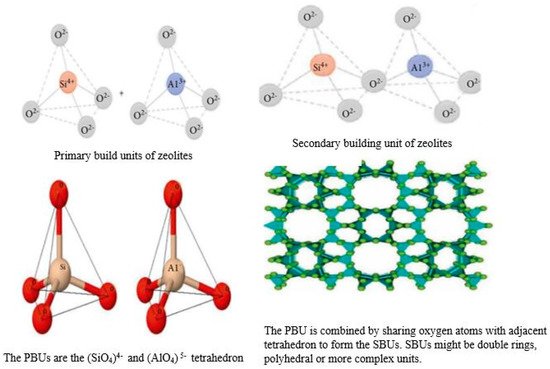The world’s food demand is rapidly growing due to a rapid increase in the global population, which is expected to rise to 9.6 billion by 2050. It is estimated that the annual grain production should increase by 70% to meet the food demand of the world’s population [
1,
2]. Over the past few decades, extensive use of agrochemicals has enhanced agricultural productivity, but also compromised human and soil health, disrupting food supplies due to the reduced agricultural yield [
3]. At present, fertilizer contributes to improving 50% of total agriculture production, but increasing the dose of fertilizers does not always guarantee an increased crop production and yield. These agricultural practices demand excessive use of nutrients such as N, P, K, Ca, Mg, Fe, Zn, Mo, and B to enhance soil fertility and productivity, but might lead to soil contamination [
4]. Despite the increased use of fertilizers, the rate of nutrient removal from the soil is much higher, resulting in a net-negative soil nutrient balance of about 10 million tons, and widespread economic loss to farmers [
4]. Nutrient deficiency is a major contemporary problem. Nutrients contained in chemical fertilizers are not readily available to plants due to their macro size; thus, crops use as little as half of what is applied [
5]. Furthermore, most macronutrients are insoluble in soil, and the unused fractions run off, contributing to the soil and water pollution. Overuse of chemical fertilizers has short-term gains in terms of an increase in crop yield or production, but poses long-term detrimental effects on the ecosystem.
A strong candidate to be employed as a carrier of nutrients are porous aluminosilicates known as zeolites. They are naturally occurring or can be synthesized chemically, whereby their porosity can be tuned on nanoscales, depending upon the application requirements. Naturally available zeolites include clinoptilolite, mordenite (MOR), erionite, phillipsite, analcime, lind type A (LTA), chabazite (CHA), beta-structured (BEA), sodalite (SOD), etc. They have different pore sizes, ion exchange properties, and bulk densities [
8]. On the other hand, synthetic zeolites are prepared using different methodologies (template-assisted, template-free, hydrothermal treatment, etc.), with the advantages that their size, shape, and other physiochemical properties can be modified [
9].
2. Smart Nutrient Delivery: Nano-Fertilizers and Their Mode of Action
Nano-fertilizers function as smart fertilizers which are either modified or synthesized from traditional fertilizers and bulk materials. They are of three different types:
- i.
-
Nanoscale fertilizers (nanoparticles of silica, iron, etc., which contain nutrients);
- ii.
-
Nanoscale additives (established fertilizers with nanoscale additives);
- iii.
-
Nanoscale coatings (fertilizers coated with nanoscale materials).
Nanotechnology in the agriculture sector is still in its infancy, as compared with medical and engineering applications. Nanoparticles have the potential to act as carriers of nutrients, leading to the concept of nanoscale fertilizers as smart nutrient delivery systems. Nano-fertilizers have advantages over routine agrochemical methods due to their large surface area, controlled release of nutrient formulations to match uptake patterns of the crops, increased nutrient uptake efficiency, solubility, and dispersion of micronutrient-directed release modes, and reduced loss rate of nutrients [
6]. Nanocarriers have many advantages (
Figure 1) because of their physicochemical properties, including their stability in media, their size, and biocompatibility, which helps to increase their shelf life in soil, resulting in efficient mixing of the fertilizer solution. Ordinary fertilizers, if used in excess, can have harmful effects on humans. However, the use of these delivery molecules helps to mitigate the drastic effects of ordinary fertilizers [
19]. The encapsulation of fertilizers for the controlled release will not only protect the active ingredient, but will also affect the diffusion rate, the interactions of compounds with the environment, and their activity [
20].
Figure 1. Advantages of delivery of agrochemicals using nanocarriers over conventional delivery.
Nanoscale fertilizers are smaller than the sizes of pores in the roots and leaves of plants, which increases their absorption and the uptake of nutrients in the plant body. Nano-zeolites can release nutrients to the plant body at a slow rate, which increases the availability of nutrients in crops and prevents the loss of nutrients from denitrification, volatilization, and leaching [
21]. The surface coating of nanoparticles with various biocompatible polymers helps to slow the release of compounds; alternatively, the surface can be made more porous so that some of the nutrient content can be retained for a longer period. The nutrient release rate required by slow-release fertilizers (SRFs) is different, depending upon the requirements of crops. The European standardization committee task force has defined the criterion for SRFs that not more than 15% of nutrients are released within 24 h, with the remaining 75% within 28 days of application of the fertilizer [
22].
The release of nutrients from nano-fertilizers is divided into three major stages: the lag period, linear period, and decay period [
23,
24]. In the lag stage, the water in the soil enters through the surface of the nano-fertilizers and slowly penetrates the core. During this stage, no fertilizer is released, and the vapor–pressure gradient created acts as the driving force. The lag is established to create a flux of water entering and a flux of solute leaving. In the second stage, the water level inside continues to increase, such that more fertilizer is dissolved, because of which osmotic pressure in the core builds, leading to slow release of the fertilizer through the pores [
25]. The last stage is decay, during which the majority of the fertilizer has been released, reducing the concentration gradient, driving force, and increasing the release rate. The mechanism is described using a sigmoidal, S-shaped curve (
Figure 2). If the internal pressure increases too rapidly in the lag phase, it may lead to a burst release of the nutrients, which is explained as a failure (dotted line); however, if the internal pressure increases linearly with time, then the nutrient molecules adsorbed in the pores will facilitate the slow-release mechanism depicted as the green sigmoidal curve. The prolonged release of nutrients from the source to the plants will promote growth, maintaining soil health.
Figure 2. Sigmoidal curve for slow-release fertilizer (green) and failure release (blue). Reproduced from [
26].
Nanoparticles such as zeolites have a high adsorption capacity to accumulate N, P, K, and S nutrients from precursor solutions due to their porous structure. They not only carry the nutrients, but also facilitate prolonged release as compared with bare nutrients provided to the plants. The enhanced micronutrient use efficiency with zeolite supplementation is also reported in many studies [
22,
26,
27]. The improved availability of nutrients in the soil with the application of zeolites will ultimately facilitate enhanced nutrient availability to the plants.
3. Zeolites: Potential Candidates for Modern Agricultural Practices
Zeolites, often referred to as molecular sieves, are crystalline, hydrated alumina silicates of alkali and alkaline earth cations. They have a three-dimensional lattice which defines an inner network of interconnected pores and channels (
Figure 3). The term ‘zeolite’ was coined by Swedish mineralogist Axel Fredrik Crønsted in 1756, who observed that, upon rapid heating, this material produced steam from water which it had adsorbed [
28]. Based on this, he called the material “zeolite”, which originates from the Greek word ζέω (zéo̱), meaning “to boil” and λίθος (líthos), meaning “stone”. These molecular sieves are composed of TO
4/2 tetrahedra, where T stands for Si, Al, Si, P, Ga, Ge, and B [
28]. The basic structures of zeolites and their composing units are depicted in
Figure 3. These materials have inbuilt channels and cages that crisscross the entire structure and make the crystalline framework accessible to foreign species. Appropriate hydrothermal conditions can lead to the crystallization of zeolites, linking Al (Si) tetrahedra (primary building blocks) into a corner-sharing network (secondary building network) through oxygen (O) atoms integrated by rings and prisms of different sizes. The combination of such units generates a structure with regular distribution of pores and cavities, with the pore size ranging from micropores (<2 nm), to mesopores (2–50 nm), to macropores (>50 nm). In a zeolite framework, Si and Al (being tetravalent and trivalent) give rise to SiO
4 electro-neutral tetrahedra and AlO
4 negatively charged tetrahedral, whereby this charge is compensated by extra cations provided by alkali and alkaline earth metals. The composition of a hydrated zeolite can be expressed by the formula:
where M is an extra framework cation with valence n, and x and y are the values of molar concentrations of Al and Si, respectively, in the zeolite structure. Z is the molar concentration of H
2O [
4]. Due to their unique physicochemical properties, zeolites have found a diverse range of applications, such as in water purification [
29], chemical and radioactive waste remediation [
30], catalysts in organic reactions [
31], pesticide and herbicide management agents, etc. [
32].
Figure 3. Structures of zeolite frameworks. Reproduced from [
33].
Zeolites are mainly classified according to their silica/aluminium ratio into the following categories [
27]:
-
Zeolite with a low Si-Al ratio (1–1.5): zeolite 4A, X, UZM-4 and UZM-5, etc.
-
Zeolite with intermediate Si-Al ratio (2–5): mordenite, LTA type, etc.
-
Zeolite with a high Si-Al ratio (10–several thousand): ZSM-5, ZSM-12, etc.
Zeolites also have a high void volume (50%), low mass density (2.1–2.2 g/cc) [
29], high cation exchange capacity (CEC) of 150–250 cmol (+)/g, cation selectivity, for cations such as ammonium, potassium, cesium, etc. In a multi-component system, the selection of a zeolite depends upon various factors, including the hydration ratio, the exchangeable cation exchange capacity, the Si/Al ratio of zeolite, and the complementary ions as well as the temperature [
33].
Zeolites are attractive materials due to their superior adsorption capacity and biocompatible nature [
34]. Zeolites can have diverse applications, including:
These materials can be used as carriers, with optimized physicochemical and biological properties, which can permeate cell membranes more easily than large molecules; thus, they can be used as delivery tools of bioactive compounds [
44]. The potential usage of zeolites for drug release [
45] and biomedical applications can be improved by providing proper support to zeolite particles, to secure adhesion to tissues [
46] and tailor drug release kinetics [
47]. Due to their documented adsorption and ion exchange properties, zeolites can potentially be used for the cost-effective removal of pollutants from water, air, and soil [
23]. Comparing natural and synthetic zeolites, the latter are preferred due to their enhanced texture parameters and diverse physicochemical properties [
48]. Among natural zeolites, clinoptilolite is commonly used in agriculture and environmental applications, and its sorption and exchange properties can be modified by physical and chemical treatments [
49,
50]. However, the full potential of zeolites to remove toxic and harmful contaminants has not been explored to date [
51].
Fertilizers play a significant role in agriculture; however, to further enhance the efficiency of nutrient use and control the long-term problem of eutrophication, nano-fertilizers have been identified as a potential route for significant development [
52]. In this context, zeolites have been employed as carriers for the slow and targeted release of essential macro- and micronutrients to plants [
53]. They reduce nitrogen loss due to leaching and allow selective release linked to time or environmental conditions. Nano porous zeolites have also been used as carriers in pest management, herbicide delivery, and as sensors in pest detection [
54,
55,
56]. Improvement in soil physical properties, by reducing the bulk density, which, in turn, improves the water holding capacity and soil air porosity, is a benefit of applying zeolites in agricultural applications [
39]. Zeolites are also considered water reservoirs, retaining soil moisture for a longer time during dry periods and enabling plants to survive during such conditions. It has been reported that soil amelioration with zeolites increases the water availability to plants by 50% [
56]. This property was exploited by Moritani et al. [
57], such that the incorporation of 10% of artificial zeolites in sodic soil resulted in improved wet aggregate stability. Different types of natural zeolites (mordenite, clinoptilolite, and stilbite) and synthetic zeolites have demonstrated positive changes in the soil properties, when applied to various textural classes of soil (sandy, loamy, clay, etc.), including water content, infiltration rate and hydraulic conductivity [
58].
Increasing the use of zeolites leads to more demand for feasible methods for the development of hierarchical porous zeolites. Depending upon the desired properties, such as zeolite size, ordered channels, and defined pore diameter, the synthesis methods can be tuned [
59]. Some methods employed for the fabrication of zeolites with enhanced physicochemical properties are discussed in the forthcoming section.



